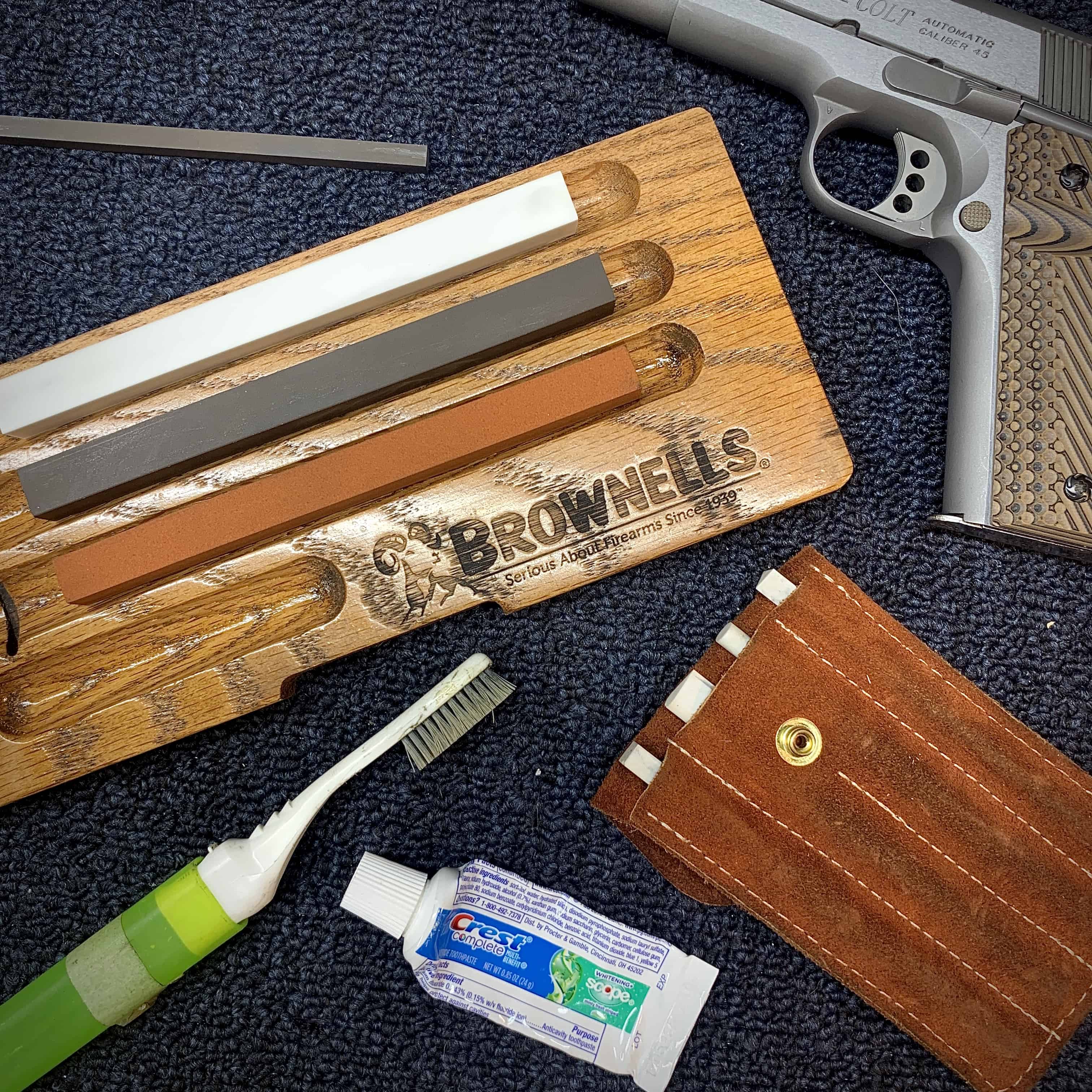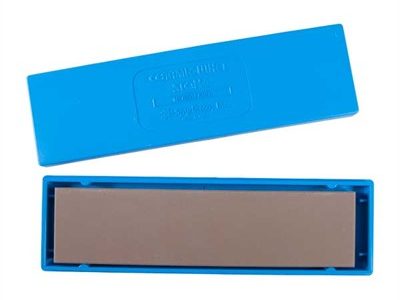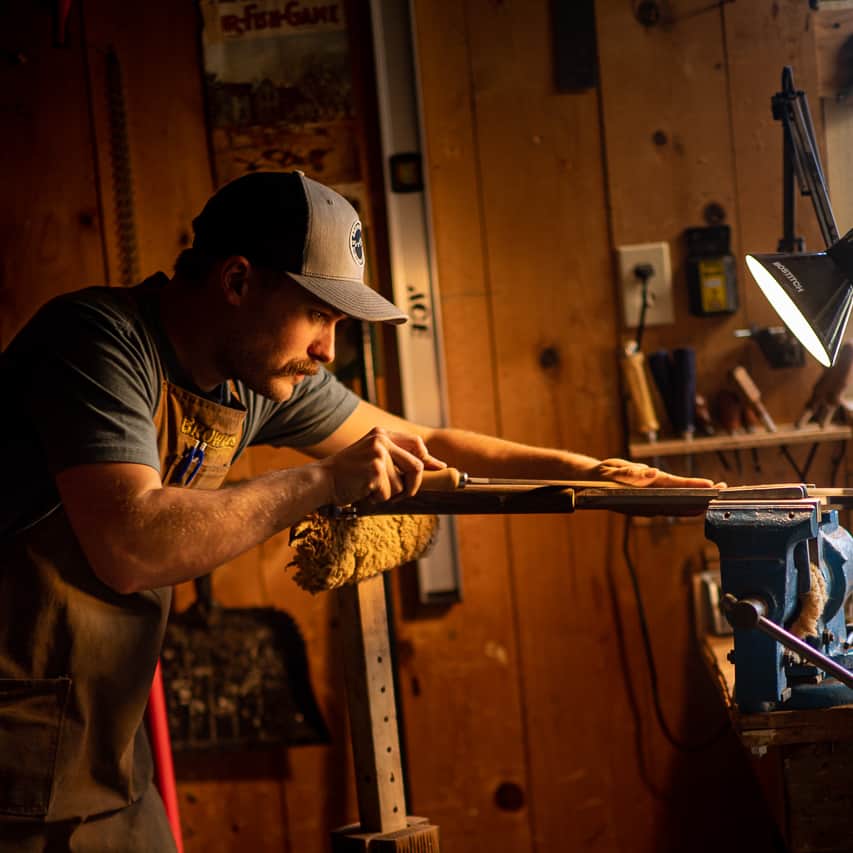
Every tool on the gunsmith’s bench needs to be taken care of to get the most out of it. That includes your bench stones. It’s no secret that your bench stones become less effective as they become filled up with metal flecks. Cleaning them is extremely simple and only takes a few minutes.
I find it easiest to divide stones into four categories when talking about how to clean them: Oil, Arkansas, Water, and Diamond.
Affiliate Disclosure: This article may contain affiliate links. When you use these links, I earn a small commission from each sale generated at no cost to you. This commission helps me continue to put out free content. I work a full-time job that I am very happy with; therefore, I don’t need this commission and am not obligated to speak highly of any product. Everything written is my own opinion: the good, the bad, and the ugly.
Oil Stones
Oil stones are primarily made out of three materials: Novaculite, Aluminum Oxide, or Silicon Carbide. As their name suggests, oil should be used both as a lubricant and cleaner. If lubricated correctly, they can be self-cleaning. Even then, they will still need to be cleaned occasionally.
To clean them, simply add the honing oil and scrub with a soft-bristled brush and wipe the excess off with a paper towel. Depending on how filled up the pores are, you may need to do this a few times before you get the desired results.
India Stones are made of Aluminum Oxide and fall under this category.

Arkansas Stone

While technically classified as a Novaculite oil stone, we are treating them as separate as their cleaning varies slightly from the other oil stones.
To clean an Arkansas stone all you need is a toothbrush and a small tube of toothpaste. Apply a small amount of toothpaste to the area of the stone that needs cleaned and use your toothbrush to scrub it in small circular motions. You don’t need to apply a whole lot of pressure to the toothbrush, let the light abrasives in the toothpaste do their job. Run it under warm water to clean off the toothpaste. Repeat as needed.
This really does an excellent job of keeping your Arkansas stones clean and in good shape. I keep a small tube of traveler’s toothpaste and a cheap toothbrush in my toolbox just for this purpose.
Water Stones
Water stones are best cleaned with–yep you guessed it–water. Although they are sometimes made with the same aluminum oxides that oil stones are made of, they are bonded with something different. This gives it different cutting properties and conversely makes it wear faster.
To clean water stones, run them under warm water and use a toothbrush to work out any loose debris. Ceramic stones fall under this category, but I find that the toothpaste trick works really well for these as well.
After cleaning, make sure they are put away dry. Mold can grow on your stones if put away wet.

Diamond Stones
Diamond stones are extremely useful on the bench and many use them to true up their other stones. They don’t tend to gum up with metal flecks as much as other stones, however, they still do need to be cleaned to prevent it from happening.
The best way to clean a diamond stone is to wash it with warm soapy water. As with all of the others above, a soft-bristled brush works great here.
Notes on Cleaning
Cleaning is a pain if you let your stones get loaded up with metal flakes. To combat this, clean often! I personally clean mine after each use and find that this makes it a very quick and painless process.
Keep your cleaning supplies for the stones with the stones, all in one place. This makes the process effortless and you are less likely to forget to do it.
This is just a guide, the manufacturer of each stone may provide you with cleaning procedures that differ slightly from these.

Written by: Kurt Martonik
Kurt is a Gunsmith, Reloader, Hunter, and Outdoorsman. He grew up in Elk County, Pennsylvania, where he became obsessed with the world of firearms. Following high school, Kurt enlisted in the United States Air Force as a Boom Operator, where he eventually rose to the position of Instructor. After his military service, he attended the Colorado School of Trades(CST) in Lakewood, CO for gunsmithing. Following graduation, he accepted a job at C. Sharps Arms in Montana, where he worked as a full time stockmaker and gunsmith.
